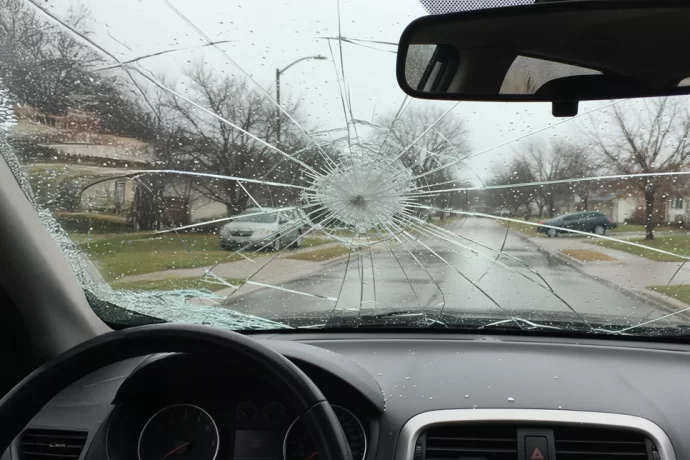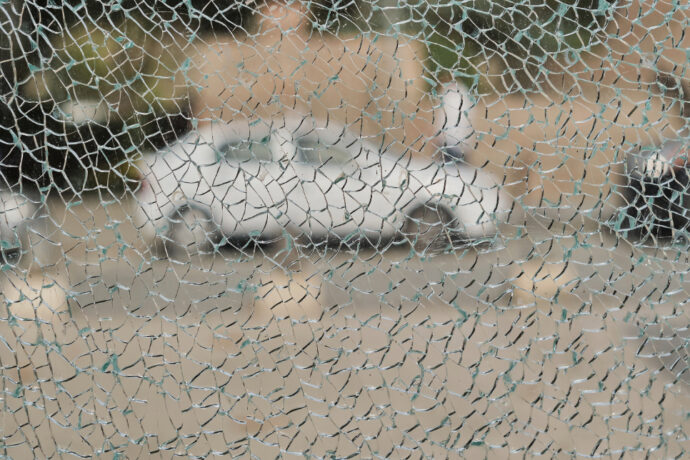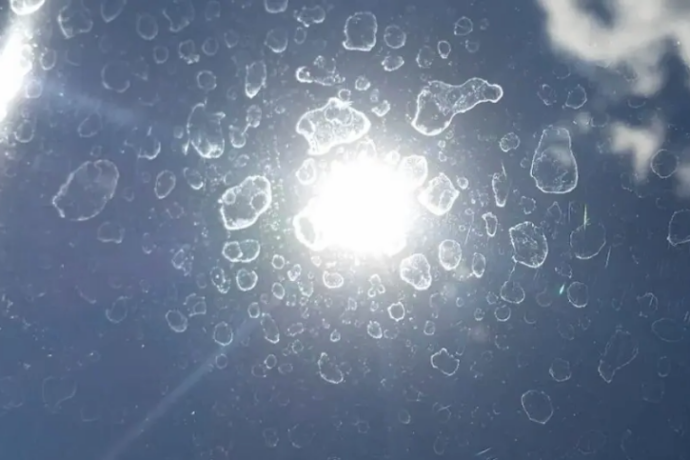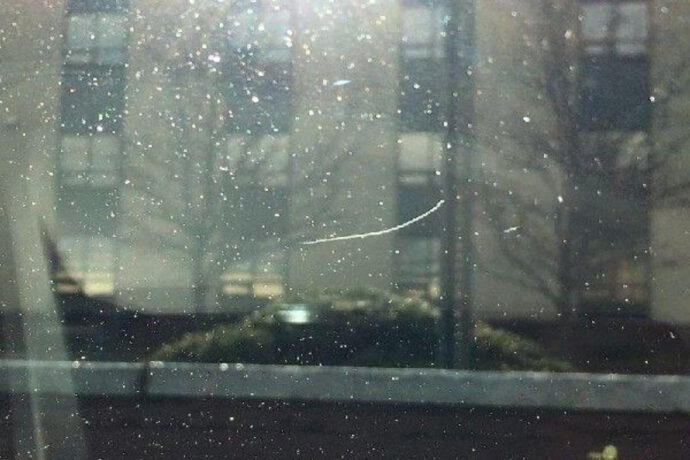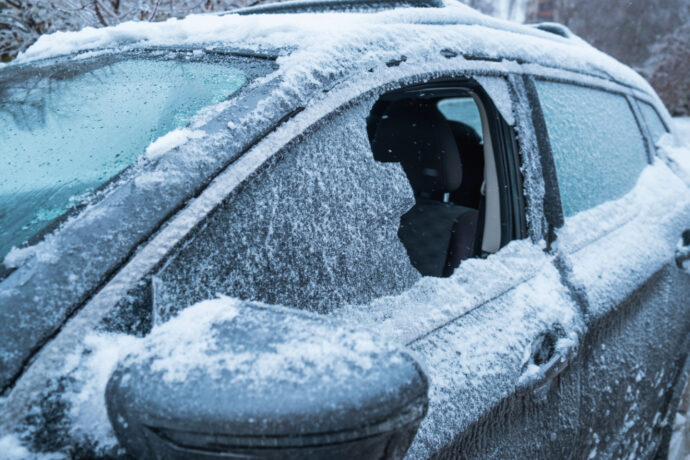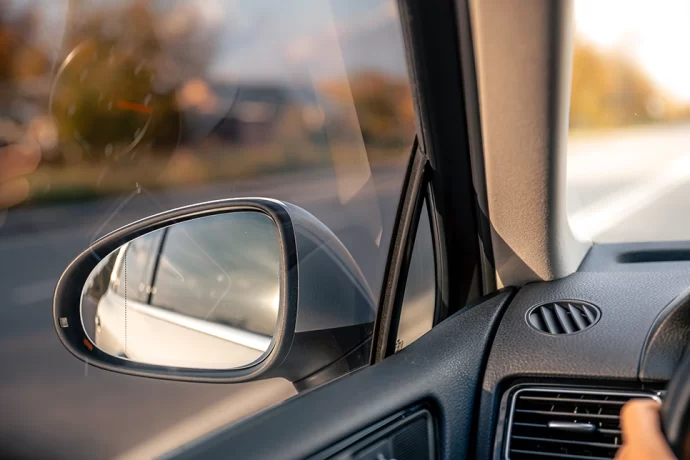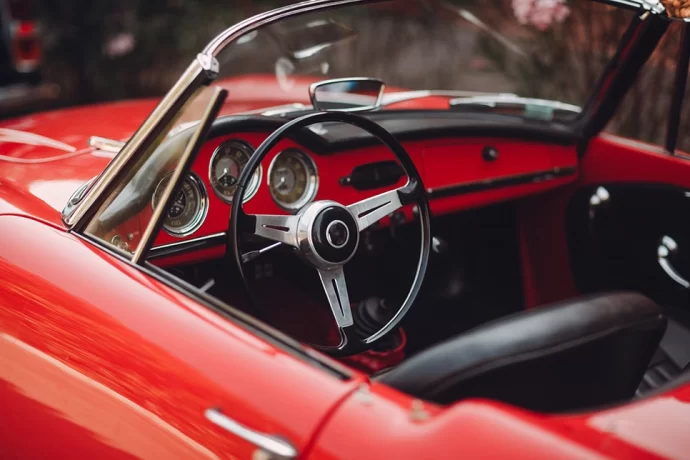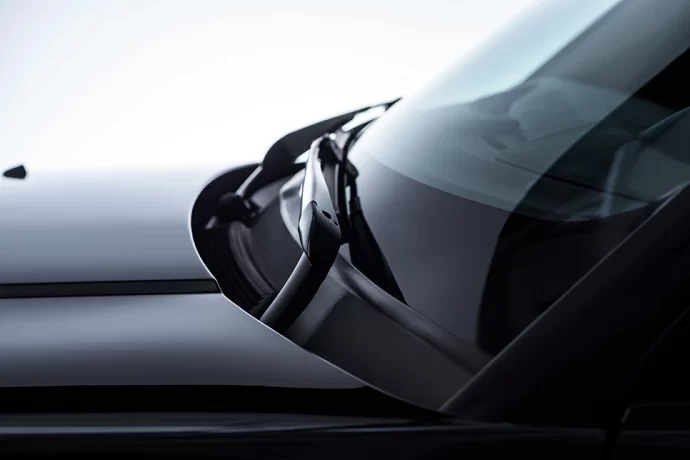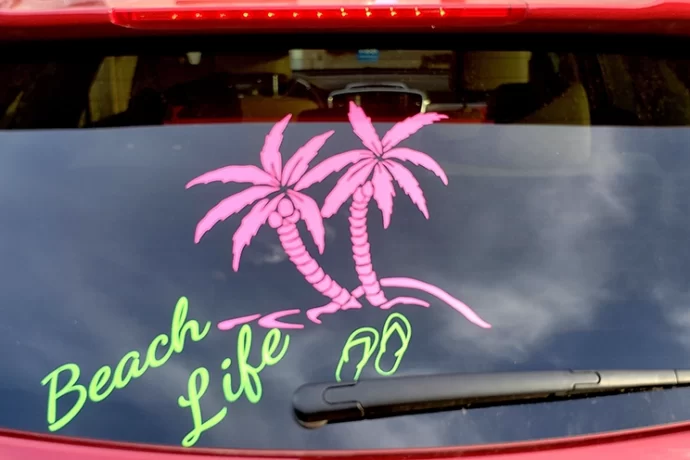The Basics of Auto Glass
When we think about vehicle safety features, our minds often jump to airbags, seat belts, or anti-lock brakes. However, one of the most crucial safety components is something we look through every day: automotive glass. Far from being just a transparent barrier against wind and weather, modern auto glass is an engineering marvel that plays a vital role in vehicle structural integrity, occupant protection, and driving comfort. In fact, your car’s windshield alone provides up to 45% of the structural integrity in a front-end collision and up to 60% in a rollover accident.
Today’s automotive glass represents decades of technological advancement and safety innovation. These sophisticated glass systems are designed to withstand the stresses of high-speed driving, protect against flying debris, and maintain their integrity during accidents. Modern auto glass goes beyond basic safety, incorporating advanced features like UV protection to shield occupants from harmful radiation, acoustic control for a quieter cabin, and even integrated sensors for advanced driver assistance systems. What was once a simple window has evolved into a complex, multi-functional component that enhances both safety and driving experience.
What is Auto Glass Made Of?
The primary components of auto glass include silica sand, soda ash, dolomite, cullet, and limestone. Silica sand constitutes a significant portion of the glass composition, providing the foundational structure and transparency characteristic of vehicle glass.
Soda ash plays a critical role in reducing the melting point of the mixture, while limestone and dolomite balance durability and workability. Additionally, aluminum oxide and potassium oxide are introduced to modify specific properties of the glass, enhancing its resilience and functionality.
The Auto Glass Manufacturing Process
The Raw Materials
Auto glass is mainly made of soda-lime glass which accounts for about 90% of all glass manufactured due to its cost, durability and clarity.
The raw materials of silica sand, sodium carbonate (soda ash) and calcium carbonate (limestone) are melted together at high temperature to form glass.
Customization of the glass involves controlling the color and properties of the glass for specific applications and vehicle models. To get a greenish tint that helps in reducing light transmission and keeping the vehicle interior cooler, iron oxide is added to the glass mixture.
This combination of raw materials and additives not only gives the auto glass its look but also its functionality such as UV protection and energy efficiency – which is why choosing between OEM and aftermarket windshields is an important consideration. These same raw materials are used to produce a wide range of specialized automotive glass products, including automotive replacement glass.
Float Glass Production
Float glass production is a critical stage in the manufacturing process of auto glass. The float glass process involves melting the raw materials in a furnace at extremely high temperatures, typically above 1400°C. The molten glass is then floated onto a bath of molten tin, where it spreads out and forms a flat, smooth sheet. This floating molten glass technique ensures uniform thickness and a flawless surface, essential for high-quality auto glass.
The glass is then annealed, or heat-treated, to relieve any stresses that may have developed during the manufacturing process. This process ensures that the glass is stable and resistant to thermal stress, meeting the stringent standards of the automotive industry.
Cutting and Shaping
Once the float glass is produced, it undergoes cutting and shaping to fit the specific design requirements of the vehicle. The glass is cut using a combination of mechanical and laser cutting techniques, ensuring precise dimensions and smooth edges. The cut glass is then shaped using a variety of methods, including grinding, polishing, and bending, to achieve the desired curvature and fit.
This meticulous process ensures that each piece of auto glass fits perfectly within the vehicle’s frame, providing both aesthetic appeal and structural integrity.
Types of Auto Glass
Laminated Glass
Laminated glass is a type of safety glass that holds together when broken to minimize the risk of injury from sharp edges – this is why timely repair of any damage is crucial. This is achieved through the use of a plastic interlayer usually polyvinyl butyral (PVB) which acts as a binder to keep the glass intact even when cracked. This feature is critical in maintaining the structural integrity of the vehicle and preventing the glass fragments from harming the passengers.
Laminated auto glass is made by sandwiching a layer of PVB between two layers of glass and then heating and pressing them together. This lamination process not only strengthens the glass but also its acoustic properties to provide a quieter driving experience by reducing external noise. Laminated glass also provides UV protection to shield the passengers from harmful rays and to preserve the interior of the vehicle.
Laminated glass is primarily used in windshields and is designed to stay in the windshield frame if it breaks. This is critical for passenger safety as the windshield is a barrier against external elements. By staying in place, the laminated windshield helps maintain the vehicle’s structural integrity during collision and provides an extra layer of protection to the occupants. It also plays a crucial role in reducing the risk of passenger injuries from glass fragments.
Tempered Glass
Tempered glass is a type of safety glass that is heat treated to make it stronger and more durable. This process makes it much stronger than regular glass and can withstand more force and pressure. The strength of tempered glass makes it suitable for automotive applications where safety and durability is top priority.
Tempered auto glass is made by heating the glass to a high temperature and then rapidly cooling it through a process called quenching. This rapid cooling process locks the outer surfaces of the glass in compression and the inner surfaces in tension. This unique balance of forces gives tempered glass its strength and shatter resistance. The tempering heating and cooling process also enhances the glass’s thermal stress resistance so it will not break due to sudden temperature change.
Tempered glass is utilized in side and rear windows, designed to break into small, blunt pieces when shattered. Unlike regular glass, tempered glass breaks into tiny, rounded fragments rather than sharp shards, making it a safer choice for vehicle windows during accidents. This breakage pattern significantly reduces the risk of injury from sharp edges. In the event of an accident, these small, blunt pieces are less likely to cause severe cuts or injuries.
Tempered glass in rear and side windows also adds to the overall structural integrity of the vehicle providing extra support and stability. This type of glass is also preferred for its clarity and can withstand external elements so drivers and passengers can have a clear view.
Automotive Glass Features
Automotive glass is designed to provide clear view, control cabin temperature and acoustics and maximize fuel efficiency. The use of laminated and tempered window glass is crucial in vehicle safety, as these types are engineered to protect passengers during crashes and ensure durability against external elements. This is achieved through the use of advanced materials and technologies such as laminated and tempered glass which provides superior optical clarity and thermal insulation.
By reducing glare and heat transfer automotive glass improves the driving experience and overall comfort of the vehicle’s occupants. Moreover, the integration of privacy glass will shield passengers from harmful UV rays and keep the interior cool.
Modern windshields can now handle various safety features such as sensors and cameras. These features are embedded into the glass and can provide functionalities like lane departure warning, automatic emergency braking and adaptive cruise control, commonly found in ADAS systems. The integration of smart technology not only enhances passenger safety but also supports the autonomous driving trend. Windshields with head up display also provide drivers with critical information without taking their eyes off the road, improving reaction time and reducing accidents.
Coatings and Tints
Coatings and tints are applied to the auto glass to enhance its functionality and aesthetic appeal. Various types of coatings, such as reflective coatings, low-e coatings, and self-cleaning coatings, are applied to the glass to improve its thermal insulation, reduce glare, and enhance visibility.
Tints, on the other hand, are applied to the glass to reduce the amount of sunlight that enters the vehicle, providing UV protection and reducing heat gain. These enhancements not only improve the driving experience by maintaining a comfortable cabin temperature but also contribute to the overall safety and efficiency of the vehicle.
Market Overview and Growth
The automotive glass industry is growing, with 90 million passenger cars and commercial vehicles being produced every year. This growth is driven by the increasing demand of vehicles globally and the technological advancement in the automotive industry. Car manufacturers are always looking for ways to improve the safety, durability and functionality of automotive glass, hence there are various custom glass solutions for different vehicle models and designs.
The global automotive glass market is expected to grow from $15.5 billion in 2021 to $31.1 billion in 2028. This growth is not only because of the increasing production of vehicles but also because of the growing awareness of safety and environmental standards. As more consumers are prioritizing safety and sustainability, the demand for high quality, energy efficient and recyclable auto glass products is increasing. Also the integration of smart technologies like heads-up displays and rain sensors in windshields is further pushing the market forward.
Safety Testing and Certification
Automotive glass must meet safety standards set by National Highway Traffic Safety Administration (NHTSA). These standards ensure the glass provides protection to passengers in various driving conditions and accidents – in fact, driving with a cracked windshield can result in being pulled over. NHTSA guidelines covers the glass’s ability to withstand high speed impacts, resistance to shattering and ability to support the vehicle’s structure. All automotive glass manufacturers must comply to these standards to ensure passenger safety across the board.
The glass is tested for its ability to withstand impacts, collisions and other safety hazards. This includes simulating real world scenarios such as debris impacts and rollover accidents to test the glass under stress. Manufacturers use various testing methods such as drop tests, pressure tests and thermal cycling tests to evaluate the glass’s durability and resilience. These rigorous tests will identify the weaknesses of the glass so manufacturers can refine their products and improve their safety features.
Manufacturers also must meet industry standards for quality and safety such as those set by Auto Glass Safety Council (AGSC). AGSC provides a comprehensive set of guidelines that covers the entire lifecycle of automotive glass from raw material selection to installation and maintenance. These standards emphasize the use of high quality materials, precise manufacturing process and proper installation technique. By following AGSC standards manufacturers can ensure their products meet and exceed industry expectations for safety, performance and reliability. This commitment to quality and safety is key to maintaining consumer trust and advancing the automotive glass industry.
Emerging Technologies
The automotive glass industry is constantly evolving, with emerging technologies playing a significant role in shaping the future of auto glass. Some of the emerging technologies include:
- Advanced Coatings: New coating technologies, such as nanocoatings and metamaterials, are being developed to enhance the functionality and performance of auto glass. These coatings can provide superior UV protection, self-cleaning properties, and improved thermal insulation.
- Smart Glass: Smart glass technologies, such as electrochromic glass and photochromic glass, are being developed to provide dynamic control over the amount of light that enters the vehicle. This technology allows for automatic adjustment of tint levels based on lighting conditions, enhancing both comfort and energy efficiency.
- 3D Printing: 3D printing technologies are being explored for the production of complex glass shapes and designs, enabling the creation of customized auto glass components. This innovation allows for greater design flexibility and the production of unique, high-performance glass parts.
- Sustainable Materials: Researchers are exploring the use of sustainable materials, such as recycled glass and bioplastics, to reduce the environmental impact of auto glass production. These materials not only help in conserving natural resources but also contribute to the industry’s efforts towards sustainability.
These emerging technologies are expected to play a significant role in shaping the future of the automotive glass industry, enabling the development of safer, more efficient, and more sustainable auto glass solutions.
Recycling and Sustainability
Glass can be recycled infinitely with no loss of quality. This infinite recyclability makes glass an eco-friendly material as it can be reused in many applications without degradation. The process of recycling glass involves melting down the old glass and reforming it which requires less energy compared to producing new glass from raw materials.
Most glass is recycled by crushing it to cullet, removing impurities and sorting by color. Cullet, the term for recycled glass pieces, is a key component in the glass manufacturing process. It acts as a flux during melting, lowering the melting point and reducing the energy required. Color sorting ensures the recycled glass maintains its desired appearance and quality for its intended use, whether in new bottles, jars or more complex products like auto glass.
Using cullet reduces the need for raw materials and energy to produce new glass. This conserves natural resources such as silica sand, soda ash and limestone and reduces the carbon footprint of glass production. Incorporating cullet in the glassmaking process reduces carbon dioxide emissions and contributes to more sustainable manufacturing, helping manufacturers meet environmental standards and reduce their carbon footprint.
Recycling windshields is difficult due to the strong bonding between the glass and PVB film but companies are developing ways to recycle the PVB film. The lamination process that bonds the glass and PVB adds complexity to recycling efforts as the interlayer must be separated from the glass. Recent innovations focus on breaking down the PVB for reuse in new windshields or other products such as adhesives and sealants. This shows the automotive industry’s commitment to sustainability and reducing environmental impact by finding ways to recycle complex glass products.
Seeing Auto Glass in a New Light
Behind every piece of auto glass lies an intricate symphony of engineering, chemistry, and precision manufacturing. From raw materials to finished product, each step in the creation of automotive glass adheres to rigorous industry standards, ensuring not just clarity and durability, but the highest levels of passenger protection. Modern auto glass manufacturing represents a perfect blend of time-tested techniques and cutting-edge technology, resulting in a product that excels in both form and function.
Using advanced materials and manufacturing techniques has improved the safety and durability of auto glass products. Innovations like float glass, lamination and tempering have changed the industry and provided custom glass solutions for modern vehicles. These advancements have resulted to auto glass that can withstand impacts and temperature changes and has additional features like UV protection, sound insulation and aerodynamic benefits to make driving safer and more comfortable.
The industry is committed to sustainability and recycling with many manufacturers developing ways to recycle windshields and reduce waste. As environmental concerns grow, the automotive glass industry is finding ways to minimize its carbon footprint and promote sustainable practices. This means increasing the use of recycled materials, reducing energy consumption during production and exploring new recycling methods for complex glass products like laminated windshields. By being sustainable, the industry can align with global standards and contribute to a greener future for the automotive.
As we can see, the glass in our vehicles provides so much more than windows to look out of. They are fundamental to our safety. Professional auto glass repair services play an important role in maintaining these safety features by addressing issues like nicks and cracks in glass. Timely auto glass services, including repairs and windshield replacement by trained technicians, are essential to ensure a vehicle’s safety and functionality. So if you have any auto glass issues and are located in the Denver area, contact us at Precision for professional, prompt help.


